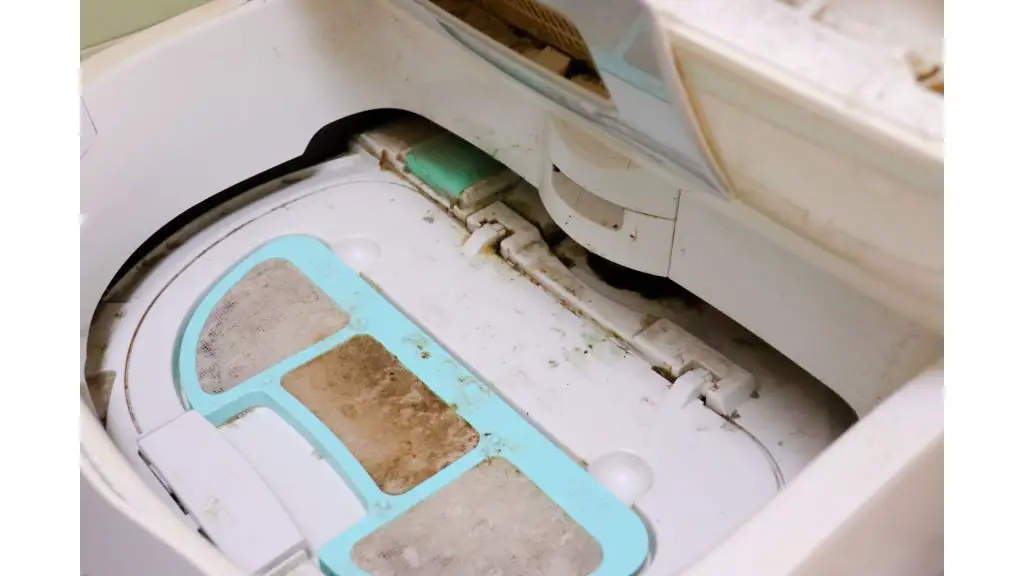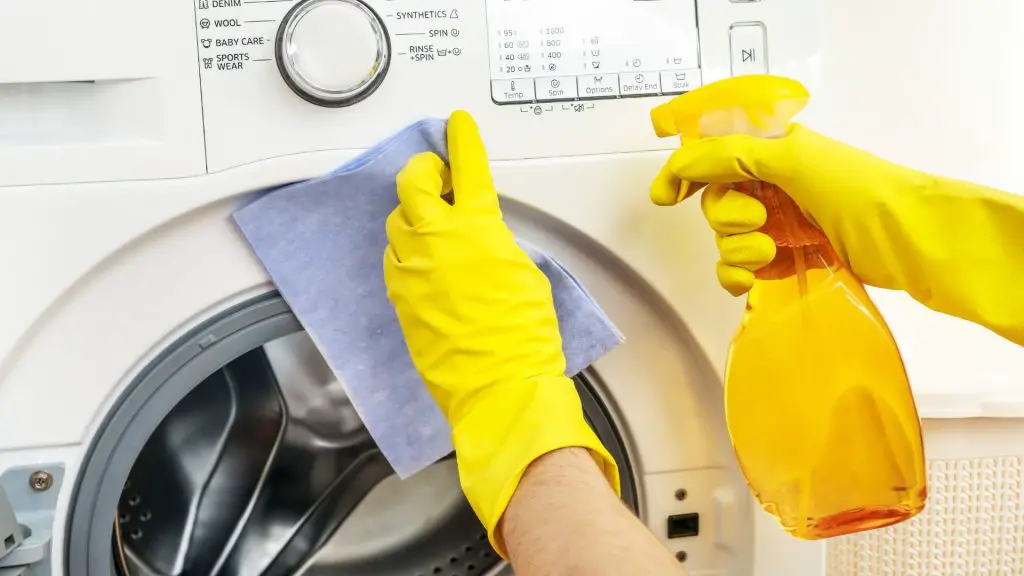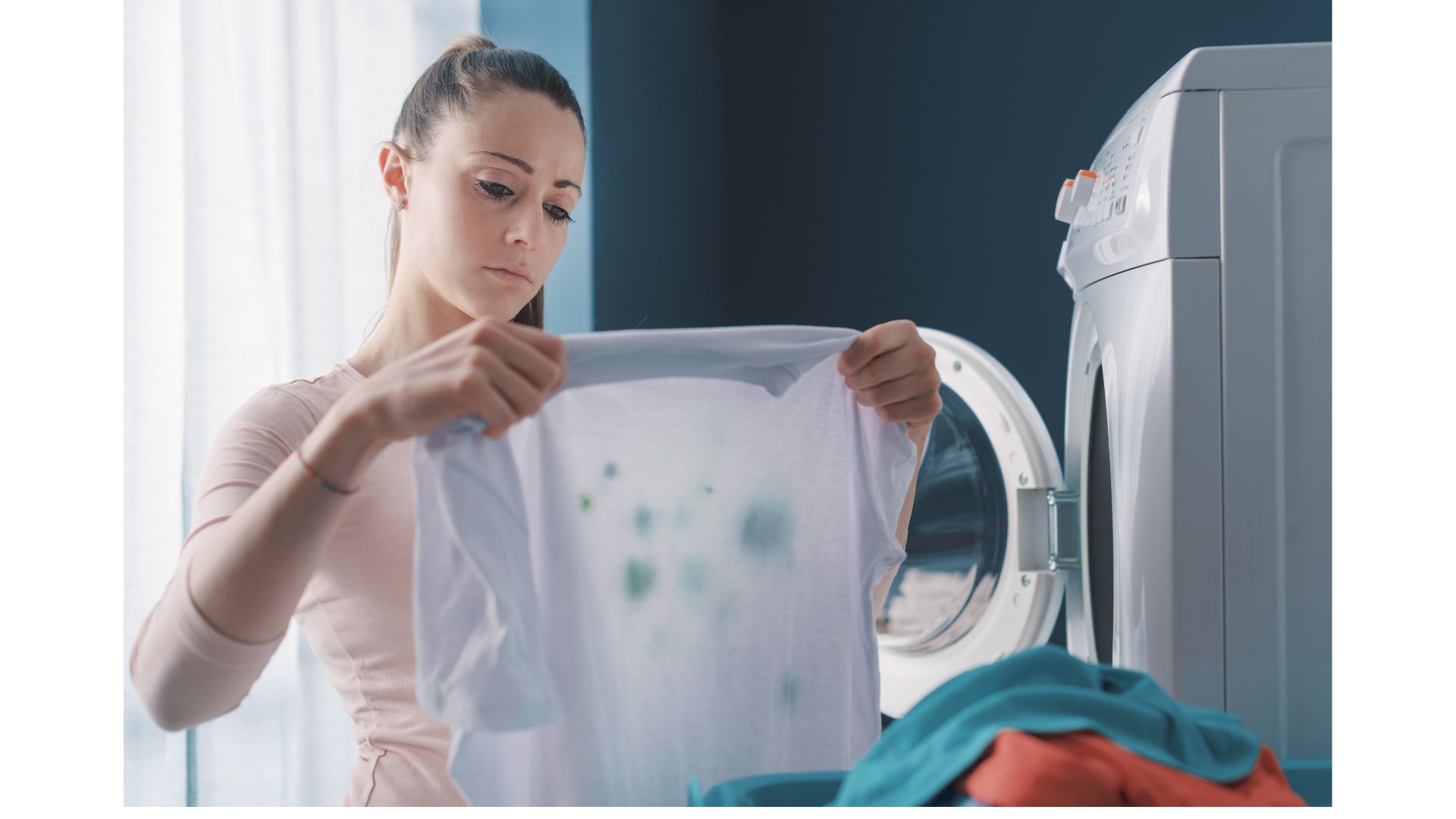Black marks are scary because people interpret them as a sign of a dead washing machine. After all, a washer that leaves black marks is useless to you. However, don’t be so quick to replace your washer. If you consult a technician, they will blame the black spots on one or more of the following:
1). Mold

Mold is the most probable cause of the black marks on your clothes. People don’t associate washing machines with bacteria because they are cleaning tools. The devices remove dirt from clothing. However, a washer’s tub encourages bacteria to thrive specifically because you continually expose it to dirty clothing.
Additionally, washer tubs are almost always damp. Neglected appliances will develop mold over time. It will form on the rubber seal at the start before eventually spreading to the drum.
It will stain every item you add to the washer until you remove the mold. Don’t expect the mold to disappear without your direct involvement.
2). Factory Defect
People don’t associate factory defects with stains. But you must remember that washing machines are complex devices with several moving parts. A malfunction can introduce grease and oil to the drum’s contents, staining your clothing repeatedly.
Manufacturers will warn consumers about washers with a reputation for staining laundry. At the very least, if you visit the company’s website, it may mention the brand’s history with your current problem. Fortunately, such websites will also offer solutions.
If the manufacturer issued a recall of your model, take action and secure a replacement. Check customer reviews to see if other people have encountered a similar issue.
3). Dirty Load

Your washer’s manual has a section that shows you how to clean the drum. The manufacturer includes this information because drums get dirty all the time. After all, you expose them to dirty clothing every day.
This can stain the drum. Sometimes, the dirty water will refuse to drain, probably because of a blockage. Unless you’re diligent enough to clean the appliance routinely, those stains will accumulate.
You won’t know the severity of the problem until the dirty drum starts leaving black marks on your laundry. If you clean the drum regularly, but the black marks have persisted, you probably neglected the door seal.
Don’t forget that your clothes rub against the door seal as you insert and remove them from the washer.
4). You keep crowding the washing machine

Washers can only accommodate a limited number of clothes at a time. If you check the manual, it will specify the washer’s weight and volume capacity.
If the appliance is too full, you can’t trust it to clean your clothes properly. In other words, the machine did not add black marks to the laundry. It simply failed to remove them. A crowded machine cannot circulate detergent efficiently. Therefore, you cannot expect the device to eliminate stubborn stains.
5). End of lifespan
An oil is leaking from one or more places. You see this in washers after they reach the end of their lifespan. They manifest various defects, including worn bearings and broken drive belts.
The drum in an old washer won’t rotate properly. This will focus the detergents and washing agents on specific spots of the laundry, producing stains.
6). Contaminated water
You’re feeding the washing machine contaminated water. Either the water is too hard, or your pipes are adding rust. Both options can lead to inexplicable staining. Hard water should scare you because it can interfere with the washer’s operations after accumulating.
7). Grease
If you recently lubricated the washer’s bearings, the oil or grease can infiltrate the drum to stain your clothing, especially if you did a poor job of reassembling the appliance.
How Do I Stop My Washing Machine From Leaving Black Marks On My Clothes?
It depends on the source of the black marks. The problem will determine the solution you apply. For instance:
1). You deal with mold by cleaning the washing machine

Running a wash cycle won’t cut it. You need a bleach solution in a spray bottle and a scrubbing brush. Don’t stop at scrubbing and wiping the tub.
Clean the door seal as well. Mold will hide in the folds. Reach in there and retrieve it with a microfiber cloth. Don’t stop washing and rinsing until every visible black speck is gone. You can use the following steps to prevent black mold from returning in the future:
- Clean the detergent drawer. Don’t allow clogging to persist.
- Beko doesn’t want softener and detergent to mix.
- Use the recommended amount of detergent. Excess detergent can attract mold.
- Leave the washer’s door open after each cycle. Let the air circulate. That includes the detergent drawer.
- Don’t allow laundry to stay in the tub once the cycle ends. The closed, damp, crowded environment will encourage bacteria to thrive.
- Don’t wait for black mold to manifest. Clean the machine at least once a month.
2). Fix a defective washing machine
That means replacing damaged drive belts, ball bearings, pulleys, and the like. People take an interest in the belts and bearings when the drum stops rotating smoothly. But if you can’t identify the source of the stains, call a professional.
Oil or grease is leaking from somewhere. A technician will find the culprit. You can’t fix every problem. For instance, if the enamel is chipping, you need a new washer. You can apply rust-resistant paint to the chipped areas.
But the enamel may continue to chip. You are better off getting a new washer, especially if your current model has reached the end of its lifespan. If you have a warranty, use it.
3). Get a plumber to scrutinize your pipes.
If you have rusted pipes, the plumber can offer solutions. If your water is too hard, the plumber can install a whole-house filtration system to soften the water. Both options are expensive but necessary.
4). Reduce the load
Don’t exceed the capacity of the drum. The manual will tell you how much laundry you can wash at a time. If the drum is struggling to rotate, the machine is still too full.
5). Dilute the softener
Sometimes the fabric softener is to blame. You have to dilute the softener. Otherwise, the stains will persist.
Can These Black Marks Be Removed?
You can remove some black marks. Others won’t budge. You won’t know until you try. Many people attack this issue by soaking the stained item overnight. But that won’t fight stubborn stains.
You need a stain remover. Rub the product into the stain with your fingers. Stain removers with the enzyme protease will make short work of protein-based marks.
But if the mark came from oil or grease, you need a product with the lipase enzyme. Stains originating from a splash of bleach won’t come out. They are permanent.
Once you identify the source of the stain and you pair it with the correct stain remover, you can wash the fabric using conventional methods until the stain disappears. In some cases, you must apply the stain remover again and again to remove the black marks.

